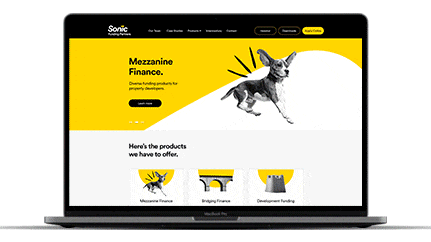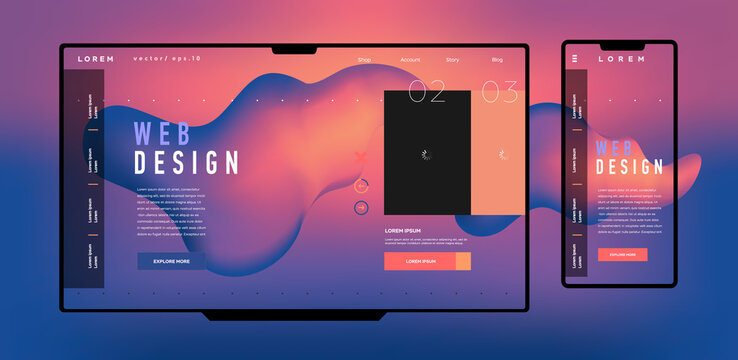Leading Tips for Creating an Impactful Internet Site Design That Transforms
To achieve this, one have to consider a range of aspects, including comprehending the target audience, focusing on customer experience, and enhancing for mobile systems. The calculated use of compelling call-to-actions and a well-defined visual power structure plays a crucial duty in leading users with their journey.

Understand Your Target Target Market
Understanding your target market is fundamental to reliable site layout, as it prepares for creating an interesting customer experience. Determining that your customers are, including their demographics, choices, and habits, makes it possible for developers to tailor the internet site's material, layout, and functionality to satisfy certain requirements.
Conducting thorough marketing research is essential in this process. Studies, meetings, and analytics can supply important understandings into customer expectations and pain points. By compiling this information, designers can produce customer characters that stand for various sectors of the audience, ensuring that design choices are educated and relevant.
Moreover, understanding the target audience helps in picking proper design components such as color design, typography, and images that reverberate with customers. A website that talks directly to its audience fosters a feeling of connection and trust, motivating longer check outs and higher conversion rates.
Eventually, a user-centered strategy to web site design not only boosts individual fulfillment however also supports service purposes by driving engagement and loyalty. By prioritizing the requirements and preferences of the target market, a website can efficiently offer its purpose and achieve wanted outcomes.
Prioritize Individual Experience
To boost the general effectiveness of a web site, focusing on customer experience (UX) is important (Website Design). A well-designed UX guarantees that site visitors can navigate the site easily, discover information swiftly, and involve with content meaningfully. This leads to enhanced user contentment and greater conversion prices
Begin by applying instinctive navigation. Menus ought to be realistically structured, allowing individuals to situate crucial areas of the site with marginal effort. Consistency in layout elements, such as color design and typefaces, promotes experience, which is vital for preserving user engagement.
Furthermore, take into consideration the packing rate of your internet site. A hold-up of just a couple of secs can result in considerable drop-offs, as customers are much less most likely to await a slow-loading web page. Simplifying images and maximizing code can boost performance and retain site visitors.
In addition, clarity in material presentation is crucial. Use succinct, interesting language and separate message with visuals to improve readability. By focusing on user experience, you not only create an extra delightful environment for visitors however also reinforce your brand's reputation. Ultimately, an emphasis on UX is a financial investment in the long-term success of your website.
Enhance for Mobile Gadgets
Optimizing for mobile tools is crucial in today's digital landscape, where an enhancing number of customers access sites with smart devices and tablet computers. A mobile-friendly design not only enhances user experience yet likewise plays a significant role in boosting online search engine rankings. To accomplish this, it is vital to take on a receptive style that instantly readjusts to numerous screen sizes and alignments.

Filling rate is another crucial aspect; mobile users are typically much less client and expect quick access to info. Enhance images and utilize internet browser caching to enhance efficiency. Examination your website on numerous devices and screen resolutions to identify and remedy any kind of potential use issues. By prioritizing mobile optimization, you make certain that your internet site continues to be competitive and effectively involves a more comprehensive target market.
Usage Engaging Call-to-Actions
A site's performance typically pivots on its ability to direct visitors towards wanted actions, making compelling call-to-actions (CTAs) essential parts of design. CTAs work as the critical points that guide customers to engage with the site, whether that indicates making a purchase, registering for an e-newsletter, or downloading a source.
To create effective CTAs, quality is critical. Use concise language that clearly communicates the action you desire the customer to take. Expressions such as "Begin," "Sign Up Free," or "Shop Now" not only convey urgency however additionally eliminate ambiguity. The positioning of CTAs is just as vital; they ought to be purposefully placed throughout the web page to guarantee they are conveniently visible, specifically in high-traffic locations.
In addition, think about making use of directional hints, such as arrows or images, to lead individuals toward these switches. By concentrating on these aspects, businesses can substantially enhance user engagement, driving conversions and inevitably achieving their internet site's objectives.
Concentrate On Visual Power Structure
Reliable site layout relies heavily on a from this source well-structured visual pecking order that guides individuals through web content flawlessly. By organizing aspects in a manner that prioritizes info, designers can boost user experience and help with decision-making. This involves using dimension, color, contrast, and spacing purposefully to accentuate one of the most essential elements of a page.
Using larger typefaces for headings and subheadings establishes a clear distinction between various areas, enabling users to scan content easily. In addition, using contrasting colors for buttons and calls-to-action can catch user focus and urge interaction. Whitespace is another essential element; it prevents clutter and enables users to concentrate on vital messages without interruptions.
Images and graphics should complement the message while also sticking to the recognized hierarchy, enhancing the general message (Website Design). Consistency in design elements, such as color plans and typography, more reinforces the visual hierarchy, making navigation user-friendly

Conclusion
Finally, reliable internet site style demands an extensive understanding of the target audience, prioritization of user experience, and mobile visit site optimization. The critical usage of engaging call-to-actions and a distinct aesthetic pecking order even more enhances customer engagement. By executing these principles, internet sites can accomplish higher conversion prices, making sure that design elements not only draw in visitors but additionally assist in smooth navigating and interaction. Ultimately, a well-executed website style functions as a vital element in driving user activities and achieving company objectives.